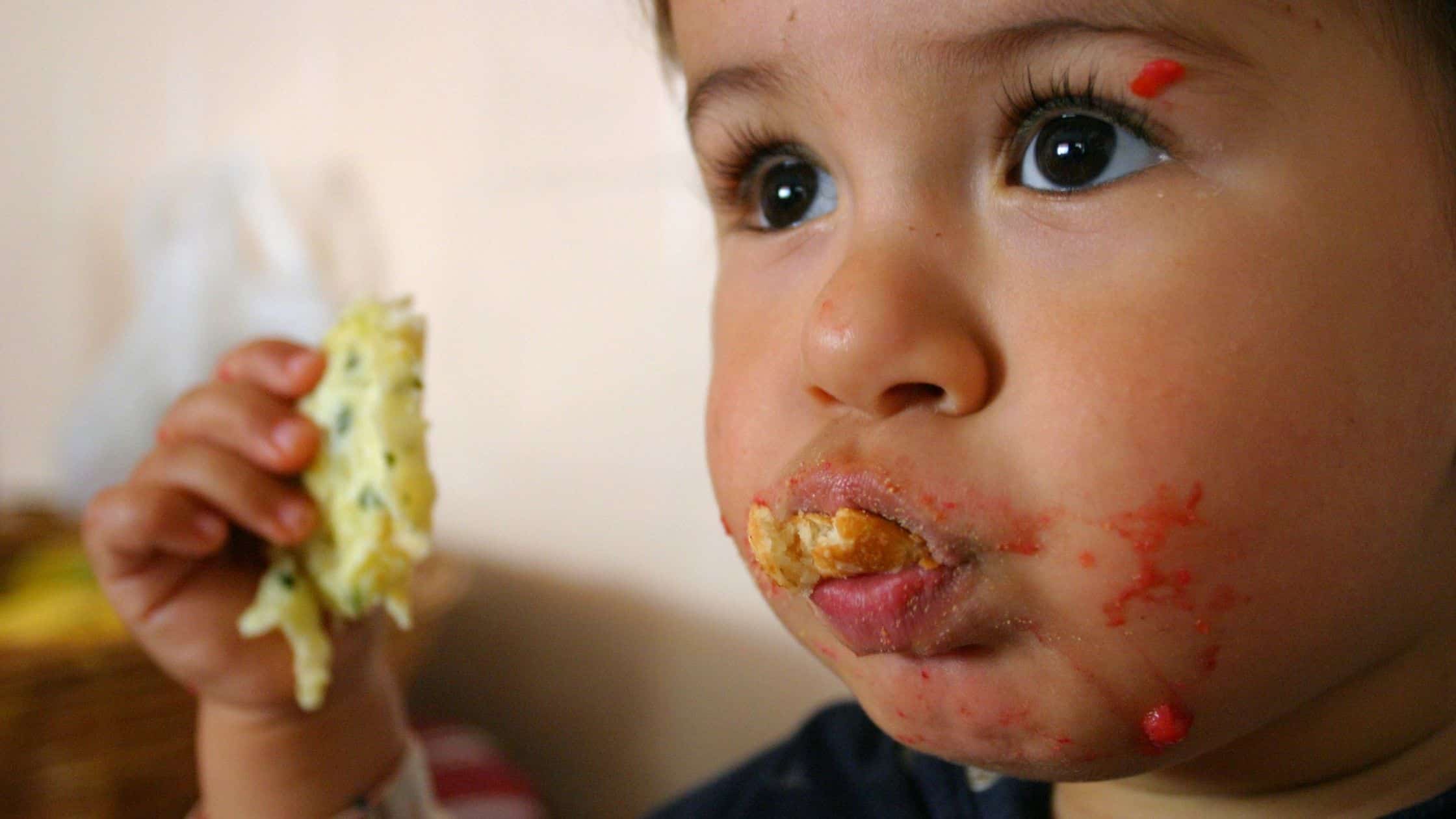
Food Pocketing in Kids: Why they do it and how to prevent food stuffing
Does your baby or toddler stuff food in their mouth and just let it sit in their cheeks for minutes to hours? Pocketing food in their mouth like a chipmunk – strange!
Pocketing food can make it hard to chew and swallow. And may also be a choking hazard and lead to tooth decay. Especially if your little one stores the food in their mouth for a long time. Sometimes, you might not even notice for hours!
There are some reasons why this is a typical stage as well as things you can do to prevent it if food pocketing becomes a habit. Read on to learn more!
Why does my child pocket food?
Food pocketing or food stuffing can be due to many reasons, including:
A normal stage
Your child is learning how much food to put in their mouth. Stuffing food is a common phase. It helps babies create a “map” of their mouth to figure out where everything is when starting solid foods!
Pressure to eat
Suppose a child is being pressured to eat and doesn’t want to eat more. They can keep food in their mouth as opposed to swallowing it. They know that the parent isn’t going to make them put even more food in their mouth!
If you’re struggling with picky eating read my “Ultimate Guide to getting your child to try new foods without the battle.”
Difficulty or painful swallowing
Maybe your child has reflux or a sore throat. A doctor can diagnose and prescribe medication for chronic reflux if needed.
Or if your child has enlarged tonsils, it can physically be hard to swallow because there’s less space for the food to go down. An airway-centric dentist or orthodontist could diagnose this and refer to an ear, nose and throat specialist MD.
Oral motor skills
Maybe your baby can’t coordinate the food well enough to chew and swallow. If they seem to be having difficulty with this, ask for a referral to a pediatric Occupational Therapist or Speech-Language Pathologist. Signs that your child might have oral motor issues include:
- coughing or gagging while eating,
- food falling out of their mouth while they eat (over 18 months),
- if they chew at the front of their mouth or
- they avoid hard to chew foods like meat and veggies.
Sensory processing concerns
Your child might like the feeling of the food putting pressure on their tongue, cheek, or gums, as it can feel soothing. Or maybe they’re sensory under-responsive and can’t feel where the food is.
Eating involves the use of all eight of our senses and is the most complex sensory task we do! To learn more about sensory and eating, watch my short video here.
What to do when your baby has overstuffed food in her mouth?
If your little one has a mouth so full of food that she can’t chew or swallow it, stay calm. You don’t want to scare your baby. And don’t go dig it out of their mouth. This could push the food back further and cause choking.
Coach your baby to spit the food out if it’s too much to chew. You might have to model this. And you might want to do a mouth check before leaving the table; get them to chew or spit out extra!
How to prevent your child from pocketing food
- You might have to offer one piece of food at a time to avoid your baby stuffing too much food into their mouth just until the phase passes!
- Encourage utensils or fun toothpicks for eating instead of hands. While it’s fine to eat with their hands, this will slow your little one down, giving them extra time for chewing and swallowing the food.
- Avoid distractions at the table, like iPads, so your toddler can focus on eating.
- Is your child sensory under-responsive? Some signs include they like big spicy flavours and feeling in their mouth (like carbonated beverages) and often drooling, sucking on things or food falling out of their mouth when eating.
- If this is the case, it can be helpful to “wake up” or alert the mouth before eating. This can be done with pressure on their teeth gums, and lips with a silicone nook brush or even a vibrating brush, if tolerated, before a meal.
- Another helpful tip, especially for under-responsive kids, is that cold water between bites gives sensation in the mouth. And for all children, encouraging sips of water between meals will help wash extra food down. And get them used to the feel of a clean mouth.
- Boosting flavour, temperature and spices for under-responsive kids will also help them figure out where food is in their mouths.
How do I teach my child to chew and swallow food instead of pocketing food?
- You can work on specific exercises with food to teach different bite sizes. Talk about small bites (“mouse size”) and demonstrate if your child tends to take too-large bites and stuff their mouth.
- You can also draw little bite marks on food (such as an apple slice or strip of dried fruit). This can show them where they should bite for an appropriate size.
- Use a mirror and ask your child to check their mouth between bites. This will increase oral awareness so they can see if their mouth is empty or still has food.
If food pocketing lasts for months, you might want to check with an occupational therapist to see if your child has oral motor concerns or sensory issues. Feeding therapy might be helpful.
But for most children, pocketing food or stuffing food will be temporary. You can deal with it for a short time using the tips above until it passes.
Founder of First Step Nutrition | Registered Dietitian Nutritionist
Jen believes raising happy, well-nourished eaters who have a healthy relationship with food doesn't have to be a battle! She is an author and speaker with 18 years of experience specializing in family nutrition and helps parents teach their kids to try new foods without yelling, tricking, or bribing.






No Comments